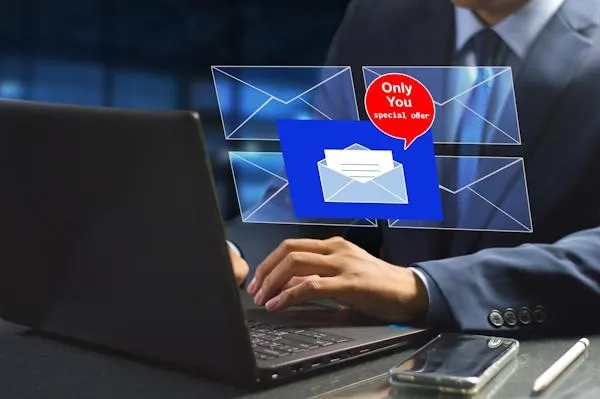
How To Combine Email and SMS Marketing Campaigns To Get More Leads
Integrating multiple communication channels is essential for maximizing lead generation. Combining email and SMS marketing campaigns can enhance your outreach, ensuring your messages reach your audience effectively. Email campaigns offer detailed content and visuals, while SMS messages provide immediacy and high open rates. By strategically combining these methods, you can create a cohesive and dynamic marketing strategy that leverages the strengths of both channels.
SMS marketing campaigns, in particular, stand out for their ability to engage customers quickly and directly. This method ensures your audience receives timely updates and promotions. When paired with the more in-depth nature of email marketing, you create a powerful synergy that boosts customer engagement and conversion rates. This guide will explore the benefits of integrating email and SMS marketing campaigns, offering practical tips and strategies to help you get more leads and grow your business.
Understanding the Benefits of Integrating Email and SMS Marketing
Combining email and SMS marketing offers several distinct advantages. First, it allows businesses to reach their audience through multiple touchpoints, increasing the likelihood of engagement. Emails provide detailed content, while SMS delivers concise, timely messages. This dual approach caters to different preferences and behaviors.

Higher engagement rates are a key benefit. Emails can nurture leads with in-depth information, while SMS can prompt immediate actions. For instance, an email might introduce a new product, and a follow-up SMS can remind recipients of a limited-time offer. This coordinated effort keeps the audience engaged and informed.
Conversion rates also improve with integration. By using both channels, businesses can create a seamless customer journey. For example, an email campaign can drive traffic to a landing page, and an SMS can follow up with a discount code. This strategy ensures that leads are consistently moved through the sales funnel.
Furthermore, combining email and SMS marketing enhances personalization. Businesses can tailor messages based on user behavior and preferences. For instance, if a customer opens an email but doesn't make a purchase, an SMS can offer additional incentives. This level of personalization increases the chances of conversion and customer satisfaction.
Data-Driven Strategies for Effective Campaigns
Data-driven strategies are essential for integrating email and SMS marketing effectively. One key strategy is segmentation. By dividing your audience based on demographics, behavior, and preferences, you can tailor messages to specific groups. This increases relevance and engagement.
Another strategy is A/B testing. Test different subject lines, message content, and send times to determine what resonates best with your audience. For example, you might find that a certain SMS message drives higher click-through rates when sent in the afternoon compared to the morning. Use these insights to refine your campaigns.
Successful campaigns often leverage automation. Automated workflows can trigger emails and SMS messages based on user actions. For instance, if a customer abandons their cart, an automated email can remind them, followed by an SMS with a discount code. This timely intervention can recover lost sales.
Metrics are crucial for measuring success. Track open rates, click-through rates, and conversion rates for both email and SMS. For example, a campaign might show that emails have a higher open rate, but SMS messages drive more immediate actions. Use this data to adjust your strategy and optimize performance.
Optimizing Timing and Frequency For Your Email and SMS Marketing
Timing and frequency are critical in email and SMS marketing. Sending messages at the right time can significantly impact engagement and conversion rates. For instance, emails sent during mid-week often see higher open rates, while SMS messages are more effective during weekends.
Balancing the frequency of messages is equally important. Overloading your audience with too many emails or SMS messages can lead to unsubscribes and reduced engagement. A good rule of thumb is to limit emails to once or twice a week and SMS messages to no more than a few times a month. This keeps your audience engaged without feeling overwhelmed.

Industry-specific recommendations can further refine your strategy. In retail, for example, sending promotional emails at the start of the month can align with pay cycles, while SMS reminders can be timed for weekends when people are more likely to shop. In the healthcare sector, appointment reminders via SMS should be sent 24 hours in advance, with follow-up emails providing detailed information.
Using data to optimize timing and frequency is essential. Analyze past campaign performance to identify peak engagement times. For example, if data shows that your audience is more responsive to emails in the morning and SMS in the evening, adjust your schedule accordingly. This data-driven approach ensures that your messages reach your audience when they are most likely to engage.
By carefully managing timing and frequency, businesses can maximize the effectiveness of their email and SMS marketing campaigns. This balanced approach helps maintain high engagement rates and improves overall lead conversion.
Tools and Technologies for Seamless Integration
Seamless marketing integration is essential for businesses to streamline their operations and enhance customer engagement. With the rapid advancement of technology, AI marketing, and AI sales tools have emerged as invaluable assets for achieving this integration. These tools offer a range of business solutions that automate and optimize various marketing tasks, from lead generation to customer retention, ensuring a more efficient and effective marketing strategy.
AI marketing tools, such as My Biz Suite, deliver personalized marketing campaigns that resonate with the target audience. By automating tasks like email marketing, social media management, and content creation, these tools free up valuable time for marketers to focus on strategic planning and creative development. This automation results in a more cohesive and impactful marketing effort, driving higher engagement and conversion rates.
In addition to marketing, AI sales tools enhance the efficiency of the sales process by automating routine tasks like follow-ups and data entry. My Biz Suite's comprehensive business tools include CRM systems and lead management features that streamline sales workflows and improve customer relationship management. By integrating AI marketing and sales tools, businesses can create a unified strategy that aligns marketing efforts with sales goals, leading to a more synchronized and successful operation.
Measuring Success and Making Adjustments
Measuring the success of combined email and SMS campaigns involves tracking key metrics and KPIs. Important metrics include open rates, click-through rates, and conversion rates. Monitoring these indicators helps businesses understand the effectiveness of their campaigns. Analyzing this data allows for informed adjustments to improve performance.
For instance, if SMS messages show higher engagement, consider increasing their frequency. Conversely, if email open rates decline, test different subject lines or send times. Continuous monitoring and adjustment ensure that marketing efforts remain effective and aligned with business goals. Businesses can optimize their integrated marketing campaigns by leveraging data and making strategic changes for maximum lead generation and conversion.
Start Your Email and SMS Marketing Campaigns With The Right Tools
Integrating email and SMS marketing campaigns can significantly enhance your lead-generation efforts by leveraging the strengths of both channels. This approach ensures timely and effective communication with your audience, driving higher engagement and conversion rates. Schedule a demo today to see how our suite of business tools can help you seamlessly combine these powerful marketing strategies.
